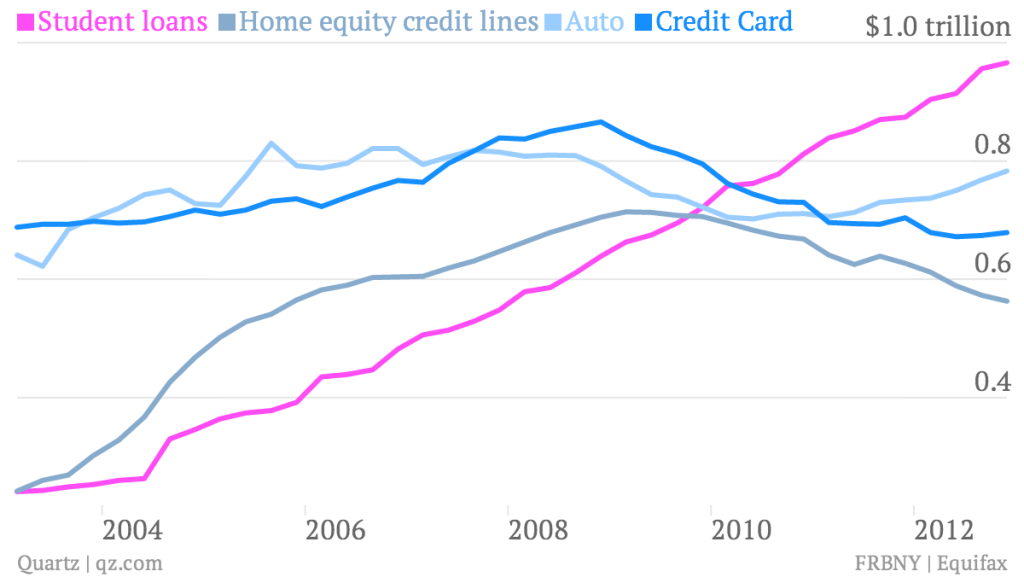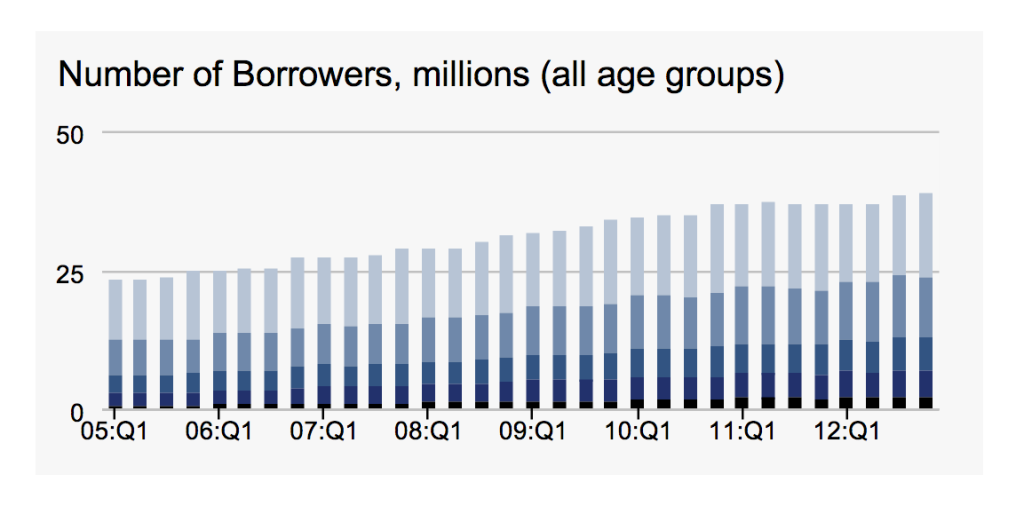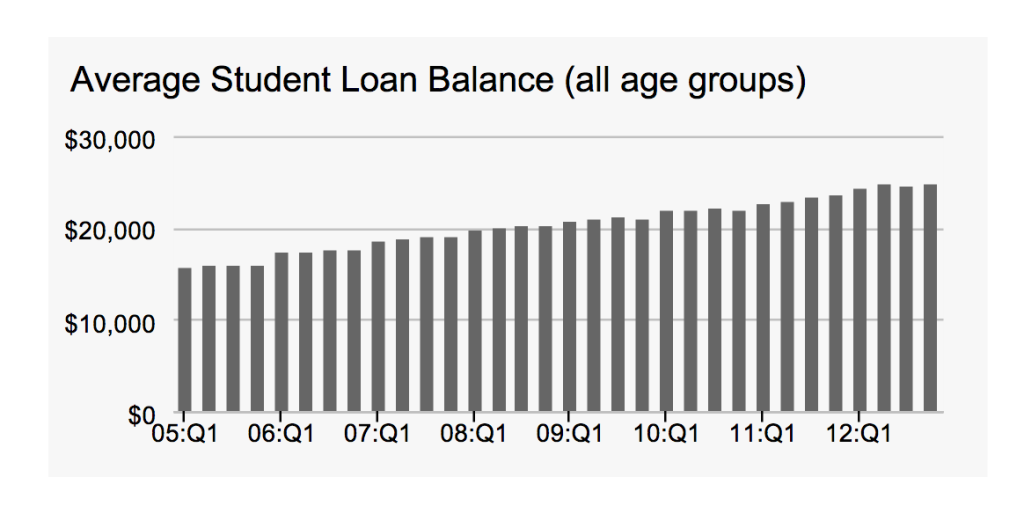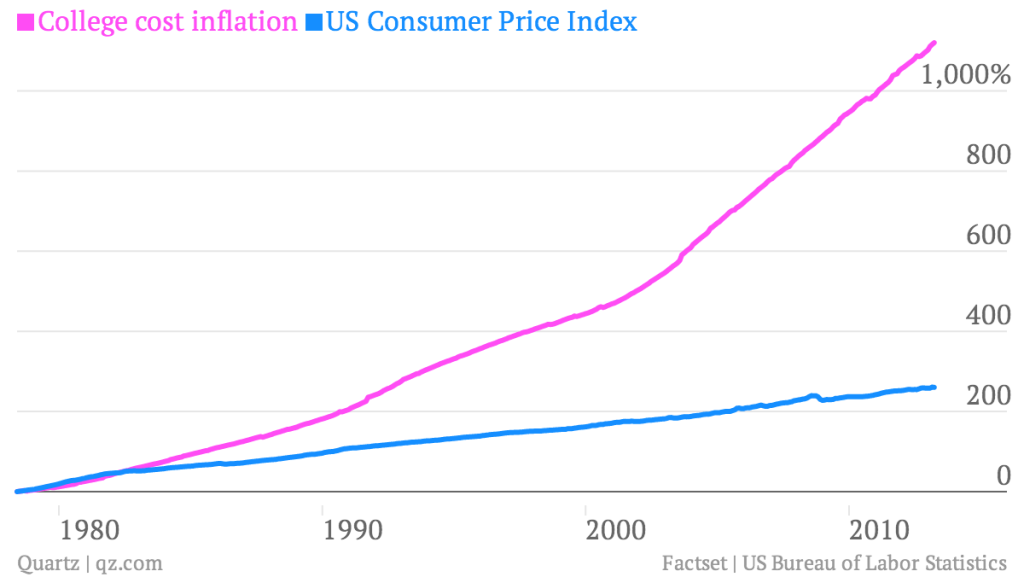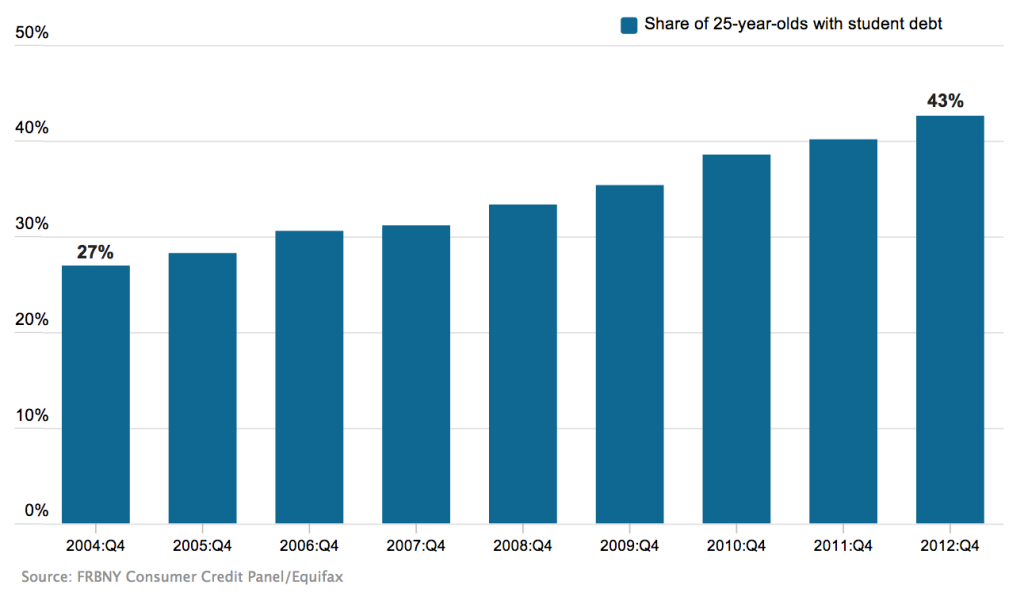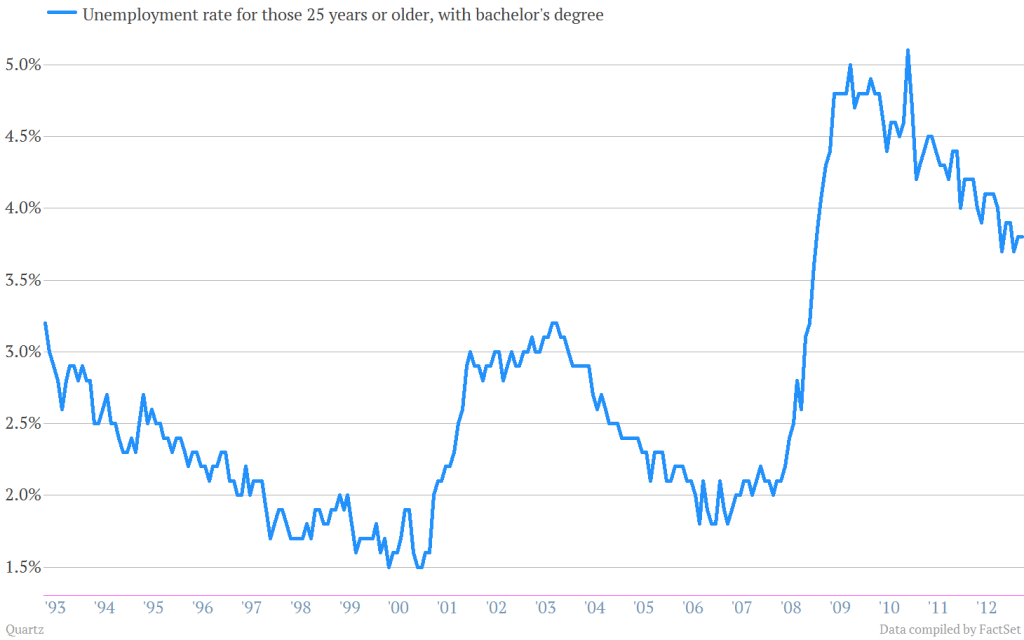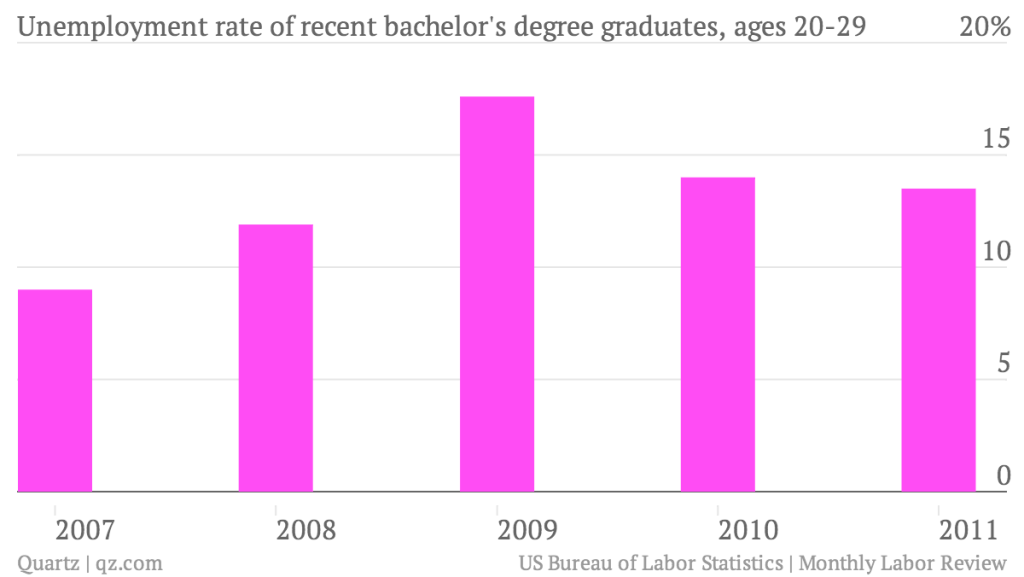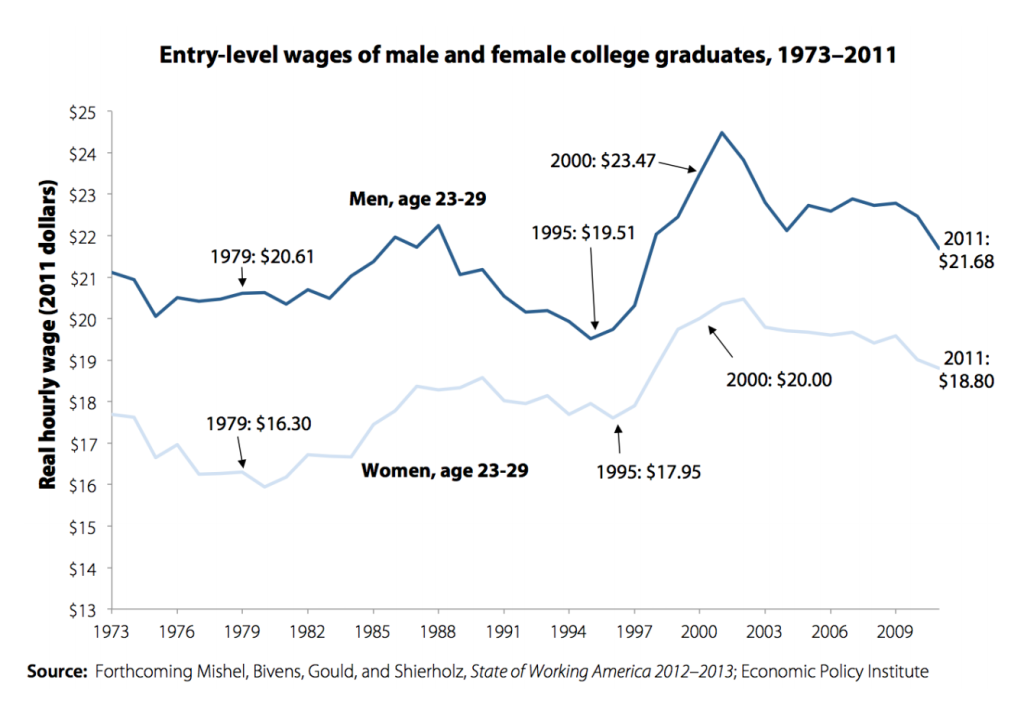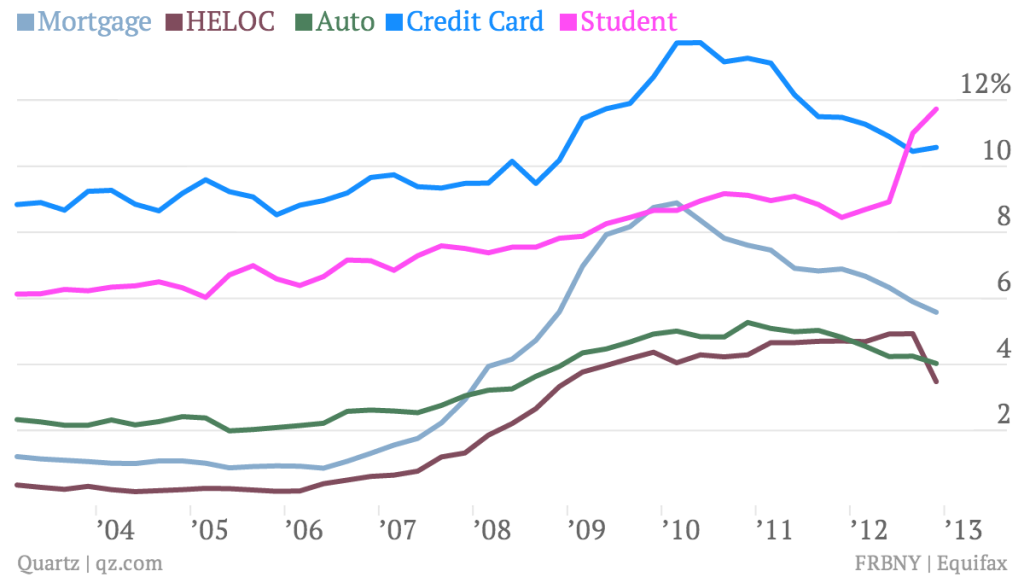Author Archives: Mark Perkins
Making The Most Out of Tuition Dollars Means Helping Students Make Better Choices
August 28, 2014
As tuition costs soar and post-undergraduate jobs remain elusive, those left footing the bill are wisely asking: Is higher education worth the cost? Here is an unfortunate truth: For far too many incoming freshmen, college – any college – is not worth it. Year after year, students fail to get the full value of their tuition. Many critics put the blame for this cost/value problem in the laps of the universities, though each critic might point to a different culprit: administrative bloat, faculty obsessed with obscure and arcane research, the high costs of athletics, the lavish amenities offered to pamper students or the popularity of majors that are allegedly ill-suited to the new job market. But these are symptoms and not the illness itself. In our experience, the source of the atrophied university experience begins with the student. Too often, students make bad choices or, frankly, just not enough great choices.
Too often we meet students who are so exhausted by the business of getting into college that they coast once they arrive – one of the most common wastes of time and tuition we see every year. A poorly constructed transcript may not attract attention in the media as well as the latest shenanigans at a frat party, but it can be equally destructive to a student’s education. As can failure to select professors based on the quality of their teaching (as opposed to the convenience of when the course is offered). Failure to engage and build professional working relationships with professors in office hours that may lead to continued study, internships and more also hurts the student’s experience. Another mistake is failing to make use of the rich panoply of support networks on today’s college campus. It’s almost embarrassing how many fantastic offerings are rolled into each tuition dollar, but most students don’t even know they exist. Another common point of failure is overbooking the schedule with extracurriculars, as students once did in high school, rather than getting intensely involved in one or two at most. The same can be said of overburdened course loads. Additionally, a failure that hits a bit closer to home but affects campus life greatly: Some families wrap the cords even tighter and attempt to micromanage from a distance while others, conversely, prematurely sever ties at home hoping to encourage independence.
The final great failure we frequently see is the approach students (and their parents) take to selecting a major and accurately perceiving its impact on a future career. University systems are not vocational schools. While contemporary critics complain about the lure of the bogus major – and some do exist – more frequently we see too many students pursue a course of study that is not their strength, simply because it seems to have obvious connections to a potential job after graduation. Rather than perform poorly in a “practical” major and be of little interest as a future job candidate, it is better to major in a subject where a student would excel, stand out and master the liberal arts tools of communication and analysis. Students who choose a unique major should complement that with some well-chosen skill courses, internships and other co-curricular activities that bolster the link to career opportunities after college. So, is college worth it? It can be. Studies show that college graduates have many advantages – material, social and emotional – that can lead to greater success later in life. Is a Top Ten school worth it? It can be. The wealth of options and opportunities available to undergrads at a well-funded institution make for a particularly well-placed launching point – but only for the intentional student. To get the full value out of college, students must be as diligent and creative about getting out of college as they were getting in. After all, the most beautiful Olympic salt-water lap pool does you no good if you don’t know how to swim.
Anne Crossman and Sue Wasiolek are authors, with Peter Feaver, of “Getting the Best Out of College.” Crossman is an author specializing in study techniques, Wasiolek is dean of Students at Duke University,and Feaver is a professor of political science and public policy at Duke.
Learn Who You Are Before Spending The Big Bucks
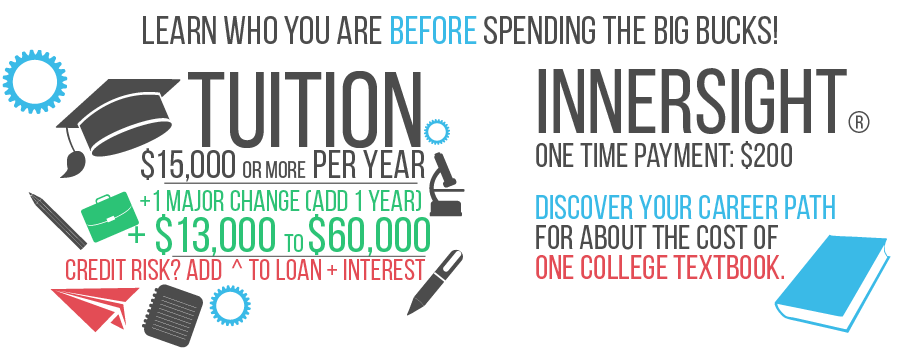
At $200 per participant in the Public, Hosted and Community Experience sessions InnerSight is competitively priced. Less than the cost of the average college textbook. This incudes the inventory, a personal 29 page InSight Guide Booklet with your results, an electronic copy of your Booklet that you receive after the session for exploring your most preferred occupations and the three hour interpretive experience in which you must participate to receive your results and Booklet.
Think about it. Many of you take preparation courses for the SAT or ACT exams that range from $299 to $1099 depending on the preparation you choose and much of this you do on your own. You then spend $ 52.50 to take the Sat or $54.50 to take the ACT and somewhere between $25 and $75 per college application just to apply and you still do not know what you might want as a major. What you choose as a major is the most costly decision you can make on your journey. A sound choice can help you avoid the college debt crisis.
Jennifer Moses in a 2011 Wall Street Journal Article reports the following for the cost of just travel to visit college “Total cost of travel, including air fare, car fare, gas, hotels, food and incidentals, for both twins accompanied by one parent each: $3,998.23. All of this just to select a college with no clarification of what to major to choose.
At just .01 % of the average cost of attendance at a public school for a year in 2014 and .005% of the cost of attendance at a private school, InnerSight is a value that can easily save you time and money while addressing the most costly question you have to answer. What is your Major?
The private consultation while more costly at $500 per individual is still a smaller investment than touring and applying to colleges.
InnerSight partners with businesses and organizations that desire to have effective program’s that truly put the person in the process. For these clients we offer InSight Guide booklets customized for your program, support for managing sessions across your organization, training for personnel that use the InnerSight material with your employees or clients.
If you would like an InnerSight Experience in your area or for your organization contact InnerSight via email Contact Us. A personal InnerSight Guide will contact you to facilitate your journey.
Learn Who You Are and Save the Bucks
10 Things You Won’t Learn on Your College Tour

1. 80% of college-bound students have not picked a major when they are selecting a school. Dr. Fritz Grupe

2. 50% of those who declare a major change it once and many change two or three times.

3. Six years after starting college 40% have not completed a degree program.

4. Try asking for the total cost to receive your degree on your college tour.
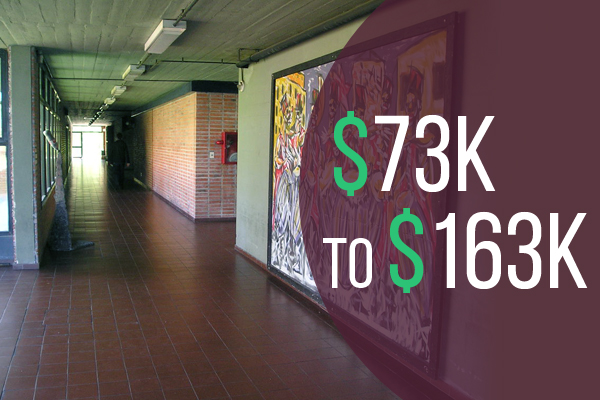
5. In 2013, the average price for one year of attendance at public universities was $18,391 and at private universities it was $40,917. Based on the price for one year of attendance, a degree completed in four years costs an average of $73,564 at public universities and $163,668 at private universities.

6. Some public universities charge prices well above average, even for in-state students. At the University of Virginia the first-year cost of attendance in 2014 is $27,208 for an in-state student, for a projected four-year degree cost of $108,832. At the University of Southern California, the first-year cost in 2013 was $68,865 for a projected four-year degree cost of $275,460
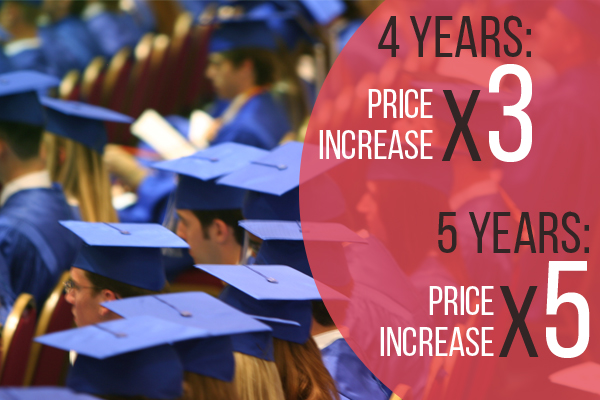
7. The total sticker price to receive your degree is likely to increase three times if you graduate in four years and five times if you graduate in six.

8. The average student loan debt upon graduation in 2014 was $33,000.

9. Avoid the college debt crisis. Unlike credit card debt, your car loan or home mortgage you always have to repay your student loan— even if you file bankruptcy.

10. A change in major is likely to add one or more years to your education and an additional average price increase of between $18,391 to $ 40,917 based on the average cost of attendance for 2014.
Use InnerSight to Find that Time and Cost-Saving Major
Leave the Military Without Regret!
The military career endgame is made up of thousands of questions that hinge upon each other. And no one starts with any of the answers.
- What job do you want to do after leaving the military?
- What Jobs are you suited for?
Research on regret shows, the top two regrets of Americans always center around education and career:
- I should have stayed in school, studied harder, got my degree
- I should have picked a different field, should have taken that job in Georgia, should have jumped ship sooner
Researchers note that we tend to collect our regrets in life at the decision points where we think we once had the most opportunity. We regret the moments when we had the biggest array of choices that would make the biggest difference … and chose the wrong thing.
Leave the military with a sense of meaning and purpose–and few regrets– Let InnerSight help with your personal transition plan by uncovering your interests and preferences and show you the occupations and jobs that people like you most enjoy. Bring focus to your Journey by starting with YOU!
Use InnerSight to Find Your COS–Civilian Occupational Specialty!
Don’t Get Caught in the College Debt Crisis!
InnerSight brings focus to your college Journey saving you both time and money. Selecting a major that people like you prefer can take years off of your college experience, help you answer that “What Do you Want to Major in” question when you really do not have a clue.
The College tour will not tell you much about the growing student borrowing bubble. Mathew Phillips in a May 2013 article Everything you need to know about the student borrowing bubble in 17 charts, shares the shocking facts about this growing challenge.
Here are a few of his powerful charts and observations!
What great de-leveraging?
- Americans have tempered their appetite for debt in the aftermath of the financial crisis, except when it comes to student debt. Over the last few years the outstanding amount of US student debt has surpassed the stock of automotive, home equity lines of credit and credit card debt. With just shy of $1 trillion in student loans outstanding, mortgages are the only form of debt Americans have more of.
More debt
- On top of that long-term trend, when the great recession hit, many had difficultly finding work and instead returned to school to burnish their skills and wait out the worst of the downturn. And plenty took on debt to do it. As a result, the number of people carrying student debt has been moving steadily higher, the New York Fed reports.
More money
- But it’s not just numbers of people that’s pushing student debt higher. The average amount of student debt these people are taking on is growing too.
So why is that?
- The cost of college tuition has been rising stupidly fast in the US. Over the last 35 years, it’s up more than 1,100%. During the same period, the Consumer Price Index—a broad gauge of the level of prices in the US—is up about 260
A new reality
- So, student debt is becoming a much more common fact of life for young Americans, with some 43% of all 25-year-olds carrying student debt at the end of 2012. Just eight years ago it was 27%.
And …
- Even a modest amount of debt can be too much if you can’t make the payment. For students leaving college during and after the great recession, things have been especially tough. For example, unemployment for college grads is still quite high by historical standards. (Although it’s much lower than unemployment for those without a college degree.)
But…
- That figure includes everybody over the age of 25. A February report on the job prospects of recent graduates showed higher rates of unemployment for those between ages 20 and 29. Researchers found that the cohort of people who graduated in 2011—either from graduate and undergraduate programs—had an unemployment rate of 12.6%. If you just look at those with bachelor’s degrees, it’s 13.5%.
Not to mention…
- The ones who have jobs are earning less. Check out this chart, from a recent Economic Policy Institute report. (HT:Jordan Weissmann)
As a result, more student loans are starting to sour
- Here’s a look at the percentage of the outstanding balance of different types of consumer debt that are 90 days delinquent. You can see that student debt has ticked higher in recent months. And by the way, these numbers likely understate the extent of the problem since more than 40% of borrowers are estimated to be currently in a forbearance, grace or deferment period when payments don’t have to be made. In fact,researchers at the New York Fed say that the true rate of borrowers at least 90 days behind on their student loan payments is over 30%.
InnerSight Partnership Turns Light Bulbs On.
YouthStop’s partnership with InnerSight provides a foundation for life’s journey. Rather than being lost in the system youth are able to identify those things they most prefer and the occupations they want to explore and prepare for as they select the next steps in their personal journey.
Martin Luther King Jr. On The Purpose of Education
“As I engage in the so-called “bull sessions” around and about the school, I too often find that most college men have a misconception of the purpose of education. Most of the “brethren” think that education should equip them with the proper instruments of exploitation so that they can forever trample over the masses. Still, others think that education should furnish them with noble ends rather than means to an end.
It seems to me that education has a two-fold function to perform in the life of man and in society: the one is utility and the other is culture. Education must enable a man to become more efficient, to achieve with increasing facility the legitimate goals of his life.
Education must also train one for quick, resolute and effective thinking. To think incisively and to think for one’s self is very difficult. We are prone to let our mental life become invaded by legions of half truths, prejudices, and propaganda. At this point, I often wonder whether or not education is fulfilling its purpose. A great majority of the so-called educated people do not think logically and scientifically. Even the press, the classroom, the platform and the pulpit in many instances, do not give us objective and unbiased truths. To save man from the morass of propaganda, in my opinion, is one of the chief aims of education. Education must enable one to sift and weigh evidence, to discern the true from the false, the real from the unreal, and the facts from the fiction. The function of education, therefore, is to teach one to think intensively and to think critically. But education which stops with efficiency may prove the greatest menace to society. The most dangerous criminal may be the man gifted with reason, but with no morals.
The late Eugene Talmadge, in my opinion, possessed one of the better minds of Georgia, or even America. Moreover, he wore the Phi Beta Kappa key. By all measuring rods, Mr. Talmadge could think critically and intensively; yet he contends that I am an inferior being. Are those the types of men we call educated?
We must remember that intelligence is not enough. Intelligence plus character –that is the goal of true education. The complete education gives one not only power of concentration, but worthy objectives upon which to concentrate. The broad education will, therefore, transmit to one not only the accumulated knowledge of the race but also the accumulated experience of social living.
If we are not careful, our colleges will produce a group of close-minded, unscientific, illogical propagandists, consumed with immoral acts. Be careful, “brethren!” Be careful, teachers!”
– Dr. Martin Luther King, Jr.
Think Incisively for Your Self with InnerSight
What Is Cool About InnerSight?
People in Transition, Students, Guidance Counselors, Case Managers, Career Counselors and Employment Specialists find InnerSight helpful in lots of ways. Some find it to be just plain fun!
Sometimes people simply need help figuring out what to do and why they are uncomfortable in what they are doing. People sometimes need help with 2 things: 1) Figuring out why they are uncomfortable doing what they are doing, and 2) Figuring out what they would rather do. It is cool when the InSight Guide booklet can give you a clue. The InSight Guide booklet can help you hit these issues head-on. Take a look as Lisa Samagaio tells about how she was able to use the InSight Guide booklet with her client to consider next steps.
InnerSight Can Help Answer Your Questions
WIOA Leaders Say InnerSight Helps Meet Federal Mandates and Achieve Results
Effective program leaders are constantly seeking better results and return on their investment. Debra Giordano an experienced program leader discusses her focus and expectations.
The InnerSight Experience helps programs comply with Federal Law and WIOA Regulations while facilitating program monitoring.
Executive Directors find the InnerSight Experience helps tie training to the clients passion which increases client persistence as well as program performance. Ann Angermeir notes that it is as important to know what you don’t want to do as it is to know what you do want to do. She shares how the InnerSight Program has helped meet her goals.
A critical performance criteria is the accuracy of the results. This is vital in making life choices. Dana Wood a program monitor talks about the accuracy of the inventory.
Enhance Program Results With InnerSight
Select a Major That Fits You!
Daniel Pink shares what you should consider when you are selecting a college major.
Christi realizes she could have Saved Time and Money when selecting a major.
The InnerSight Experience provides valuable information that can help you select a college Major. Natasha Mullins talks about how her experience helps her work with youth.
Use InnerSight to Find Your Best Fit Major
People in Transition Get Traction With InnerSight
People across America find job or career change to be a part of todays workplace. Richard Sloan, a director of human resources, was responsible for downsizing his company and then was laid off himself. Listen to his story and see if it sounds familiar.
Caught in transition Richard found InnerSight offered new possibilities that fit his interests and passions. Listen to what he has to say about his InnerSight Experience.
Many participants come to the Experience with self-imposed limits on their transferable skills. Laketa Case thought of herself as a truck driver without considering the things she had been doing for years. Mid-career professionals and veterans often face this challenge in their transition. Listen to what she uncovered.
Get Traction in Your Transition with InnerSight

